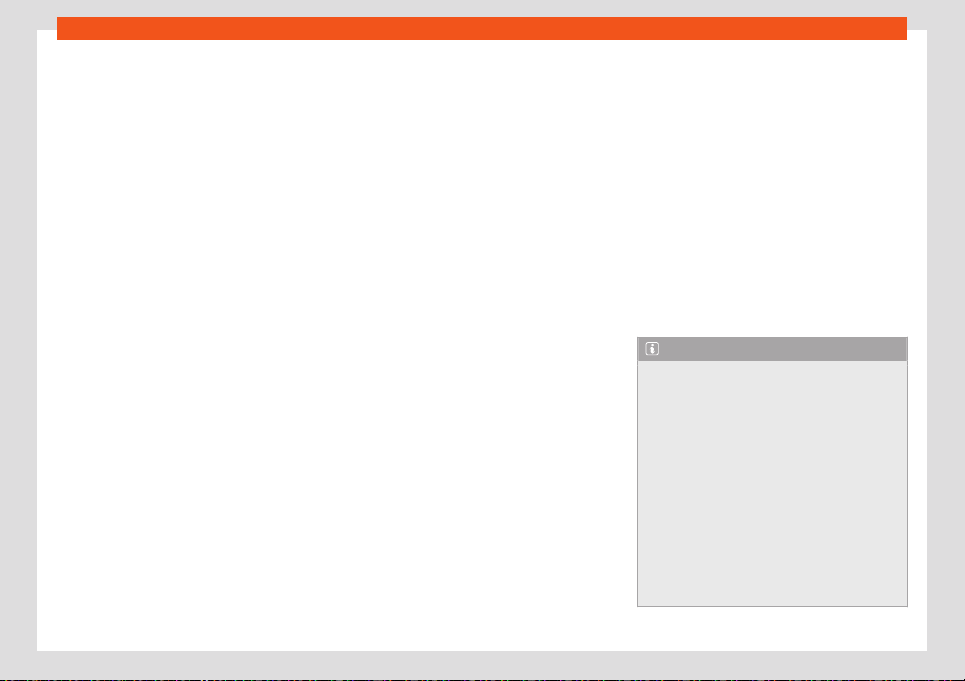Loading ...
Loading ...
Loading ...

Start and driving
Avoid driving at high speed
Av
oid travelling at your vehicle’s top speed,
whenever possible. Fuel consumption, emis-
sion of harmful gases and noise pollution
multiply as speed is increased. Driving at
moderate speeds will help to save fuel.
Reduce idling time
In vehicles with the Start-Stop system idling is
automatically reduced. In vehicles without
the Start-Stop system it is worth switching off
the engine, for example, at level crossings
and at traffic lights that remain red for long
periods of time. When an engine has reached
operating temperature, and depending on
the cylinder capacity, keeping it switched off
for a minimum of about 5 seconds already
saves more than the amount of fuel necessa-
ry for restarting.
The engine takes a long time to warm up
when it is idling. Mechanical wear and pollu-
tant emissions are also especially high during
this initial warm-up phase. It is therefore best
to drive off immediately after starting the en-
gine. Avoid running the engine at high speed.
Regular maintenance
Regular servicing helps in saving fuel even
before the engine is started. A well-serviced
engine gives you the benefit of improved fuel
efficiency as well as maximum reliability and
an enhanced resale value. A badly serviced
engine can consume up to 10% more fuel
than necessary.
Avoid short journeys
The engine and catalytic converter need to
reach their optimal operating temperature
in order to minimise fuel consumption and
emissions.
A cold engine consumes a disproportionate
amount of fuel. The engine reaches its work-
ing temperature after about four kilometres
(2.5 miles), when fuel consumption will return
to a normal level.
Check tyre pressure
Always make sure the tyres are inflated to the
correct pressures
›››
page 347 to save fuel. If
the pressure is below half bar, fuel consump-
tion may increase by 5%. Due to the greater
rolling resistance, under-inflation also increa-
ses tyre wear and impairs handling.
Do not use winter tyres all year round as
they increase fuel consumption by up to 10%.
Avoid carrying unnecessary loads
Given that every kilo of extra weight will in-
crease the fuel consumption, it is advisable
make sure that no unnecessary loads are be-
ing transported.
Since the luggage rack increases the aero-
dynamic drag of the vehicle, you should re-
move it when not needed. At speeds of
100-120 km/h (62-75 mph), this will save 12%
of fuel.
Save electrical energy
The engine drives the alternator, thereby
generating electricity. This implies that any
increase in power consumption also increa-
ses fuel consumption! For this reason, switch
off any unneeded electrical devices. Devices
that use a lot of electricity include the blower
at a high setting, the rear window heating or
the seat heating.
Plug-in hybrid drive: brake early and evenly
to take advantage of energy recovery.
Note
●
If you hav
e the Start-Stop system, it is
recommended that it should not be discon-
nected.
●
It is recommended that you close the
windows when driving at more than
60 km/h (37 mph).
●
Do not drive with your foot resting on the
clutch pedal, as the pressure can make the
plate slip. This causes wear and can dam-
age the clutch plate.
●
Do not ride the clutch on a hill, use the
brake. The fuel consumption will be lower
and you will prevent the clutch plate from
being damaged.
»
237
Loading ...
Loading ...
Loading ...